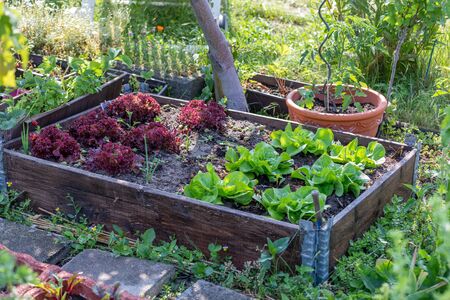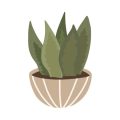1. Why Grow Your Own Herbs?
Growing your own herbs at home is one of the easiest and most rewarding ways to dip your toes into gardening—especially if youre just starting out. Not only do herbs take up very little space, but many varieties are incredibly low-maintenance, making them perfect for beginners.
Save Money
Buying fresh herbs at the grocery store can get expensive, especially when recipes call for just a few sprigs and the rest goes to waste. By growing your own, you can snip off exactly what you need whenever you need it—and your plants will keep growing back.
Enjoy Fresher Flavors
Nothing compares to the flavor of freshly picked herbs. Whether its basil in a homemade pesto or mint in your iced tea, garden-fresh herbs bring vibrant taste and aroma that dried or store-bought versions simply can’t match.
Add Beauty to Your Space
Herbs aren’t just practical—they’re also beautiful! Many have lovely textures, colors, and even flowers that can brighten up a kitchen windowsill or add charm to your patio or backyard garden.
Healthier Meals Made Easier
Having herbs on hand encourages healthier cooking habits. When fresh flavor is always within reach, it’s easier to skip processed sauces and salty seasonings in favor of natural ingredients.
Quick Comparison: Store-Bought vs Home-Grown Herbs
| Store-Bought Herbs | Home-Grown Herbs | |
|---|---|---|
| Cost Over Time | High (repeated purchases) | Low (one-time investment) |
| Freshness | Short shelf life | Harvested as needed |
| Flavor | Milder due to storage time | Bolder and more aromatic |
| Sustainability | Plastic packaging and transport emissions | Eco-friendly and zero waste |
The Bottom Line?
If youre looking for an easy way to save money, eat better, and beautify your living space, starting an herb garden is a great first step. Even if you’ve never grown a plant before, many herbs practically grow themselves—and we’ll show you exactly how in this beginner’s guide.
2. Herbs That Thrive Without the Fuss
If youre just starting your gardening journey, youll be happy to know that some herbs are incredibly easy to grow — even if you don’t have a green thumb. These low-maintenance herbs require minimal care and can flourish in containers, garden beds, or even on a sunny windowsill. Lets take a look at five beginner-friendly herbs that practically grow themselves.
Basil
Basil is a warm-weather herb that loves sunlight and well-drained soil. It’s perfect for summertime cooking and can be grown indoors or outdoors. Just make sure it gets at least 6 hours of sun daily, and pinch off the top leaves regularly to encourage bushier growth.
Mint
Mint is one of the easiest herbs to grow — sometimes too easy! It spreads quickly, so its best planted in a container to keep it from taking over your garden. It tolerates partial shade and doesn’t need much attention once it’s established.
Rosemary
With its woody stems and fragrant needles, rosemary not only smells great but also thrives in dry conditions. Its drought-tolerant and prefers full sun. Once rooted, rosemary is quite hardy and can even survive mild winters in many U.S. zones.
Thyme
Thyme is another sun-loving herb that doesn’t ask for much. It does well in poor soil, needs very little water, and rarely suffers from pests. Plus, its tiny leaves add big flavor to soups, meats, and roasted vegetables.
Chives
Chives are hardy perennials that come back year after year with minimal effort. They grow well in both pots and garden beds, and their mild onion flavor makes them a kitchen favorite. Chives like full sun but will tolerate some shade too.
Quick Reference: Easy-Grow Herbs for Beginners
| Herb | Sunlight Needs | Watering Needs | Best Growing Method |
|---|---|---|---|
| Basil | Full Sun (6+ hrs) | Moderate | Pots or Garden Beds |
| Mint | Partial to Full Sun | Moderate | Pots (to contain spreading) |
| Rosemary | Full Sun | Low (drought-tolerant) | Pots or Garden Beds |
| Thyme | Full Sun | Low | Pots or Rock Gardens |
| Chives | Full Sun to Partial Shade | Moderate | Pots or Garden Beds |
No matter how much space or experience you have, these herbs are great choices for any beginner gardener in the U.S. They’re not just easy to grow—they’re delicious too!
![]()
3. Choosing the Right Spot: Indoors or Out?
Picking the perfect place to grow your herbs can make all the difference—especially if youre just getting started. Whether youre working with a sunny windowsill or a cozy back porch, its important to think about sunlight, temperature, and how much space you really have. Heres how to choose the right spot for your easy-to-grow herbs.
☀️ Sunlight: The #1 Factor
Most herbs love sunlight—at least 6 hours of it each day. That means youll want to pick a location that gets plenty of natural light. If youre growing indoors, a south-facing kitchen windowsill is often ideal. Outdoors, a sunny patio or backyard corner works great.
| Location | Sunlight | Best Herbs |
|---|---|---|
| South-Facing Windowsill | 6+ hours/day | Basil, Parsley, Chives |
| East-Facing Window | 4–6 hours/day | Mint, Cilantro |
| Back Porch (Full Sun) | 6–8 hours/day | Rosemary, Thyme, Oregano |
| Shady Balcony | <4 hours/day | Lemon Balm, Mint |
🏡 Indoor vs Outdoor Growing Spaces
Indoor Spaces
- Kitchen Windowsills: Super convenient for cooking. Just make sure it gets enough light.
- Shelves Near Bright Windows: Great for small pots and herb kits.
- Avoid: Drafty spots near doors or places with artificial lighting only.
Outdoor Spaces
- Potted Herbs on Patios or Porches: Easy to move based on weather changes.
- Larger Garden Beds: Perfect if you have yard space and want to plant in bulk.
- Avoid: Areas with strong winds or poor drainage.
🌱 Seasonal Considerations
If you live in a colder U.S. region with harsh winters, consider starting your herbs indoors and moving them outside once temperatures stay above 50°F (10°C). In warmer areas like California or Florida, you can grow herbs outdoors nearly year-round.
The key is flexibility—start small, pay attention to light and temperature, and don’t be afraid to move your pots around until you find the sweet spot where your herbs thrive!
4. Planting and Care Made Simple
Starting your herb garden doesn’t have to be complicated. With a few basic tools and a little know-how, even first-time gardeners can enjoy fresh herbs right from their backyard, balcony, or kitchen windowsill. Here’s how to keep things simple and successful.
Choose the Right Spot
Most herbs love sunlight—ideally 6 to 8 hours per day. A sunny windowsill, patio, or garden bed works great. If youre planting indoors, make sure the spot gets plenty of natural light or consider using a grow light if needed.
Use Basic Gardening Tools
You don’t need fancy equipment to get started. These common items are available at most local hardware stores like Home Depot or Lowe’s:
| Tool | Purpose |
|---|---|
| Trowel | For digging small holes when planting herbs |
| Watering can or hose with spray nozzle | To gently water without washing away soil |
| Pruning shears (small) | For trimming and harvesting your herbs |
| Pots with drainage holes (if growing in containers) | Prevents overwatering and root rot |
Planting Your Herbs
Soil Tips:
Use a well-draining potting mix labeled for vegetables or herbs. Avoid heavy garden soil that can compact easily. Mixing in a bit of perlite can help with drainage.
Spacing:
Give each herb its own space to breathe. If you’re using containers, one plant per pot is usually best. In garden beds, follow spacing instructions on the plant tag or seed packet.
Watering Basics
Overwatering is a common mistake among beginners. Most herbs prefer slightly dry soil between waterings. Stick your finger into the soil about an inch deep—if it feels dry, its time to water.
| Herb | Watering Frequency (Approx.) |
|---|---|
| Basil | Every 2–3 days or when top inch is dry |
| Rosemary | Once a week; likes drier soil |
| Mint | Every 2–3 days; keep evenly moist |
| Thyme | Once or twice a week depending on heat |
Easy Pruning for Healthy Growth
A little snip goes a long way! Regular pruning encourages bushier growth and prevents your herbs from getting leggy. Use clean pruning shears to cut just above a set of leaves.
- Basil: Pinch off flower buds to keep the plant productive.
- Mint: Trim regularly to prevent it from taking over other plants.
- Sage & Rosemary: Prune lightly—these woody herbs don’t like heavy cuts.
A Few Bonus Tips for Success:
- Add mulch around outdoor herbs to help retain moisture and reduce weeds.
- If growing in pots, use saucers to catch excess water but avoid letting pots sit in standing water.
- Label your herbs—it’s easy to forget what’s what when they start growing!
This beginner-friendly approach helps you grow healthy, flavorful herbs without stress—and all with tools and supplies you can easily grab at your nearest American hardware store.
5. Harvesting and Using Your Homegrown Herbs
Once your herbs are thriving, its time to enjoy the fruits of your (minimal) labor! Knowing when and how to harvest your herbs is key to getting the best flavor, and using them in everyday American meals and drinks is easier than you might think.
When to Harvest Your Herbs
Timing matters when it comes to harvesting. In general, pick herbs in the morning after the dew has dried but before the sun gets too strong. This is when the essential oils—the compounds that give herbs their flavor and aroma—are most concentrated.
| Herb | Best Time to Harvest |
|---|---|
| Basil | Before it flowers, when leaves are full and green |
| Mint | Just before flowering for peak flavor |
| Thyme | Right before or at the start of blooming |
| Parsley | When stems have three segments of leaves |
| Chives | When blades reach 6 inches tall; trim from the base |
How to Harvest Without Hurting the Plant
Use clean scissors or pruning shears and snip just above a leaf node (where leaves meet the stem). This encourages bushier growth and prevents damage. Never take more than one-third of the plant at a time—this helps keep it healthy and growing strong.
Simple Ways to Use Fresh Herbs at Home
You don’t need fancy recipes to enjoy fresh herbs. Here are some easy ways to include them in everyday meals:
| Herb | Popular Uses in American Dishes & Drinks |
|---|---|
| Basil | Add to caprese salads, homemade pizza, or pasta sauces |
| Mint | Muddle into iced tea, lemonade, or mojitos; great with lamb or chocolate desserts |
| Thyme | Toss with roasted vegetables, add to chicken dishes or stews |
| Parsley | Sprinkle on mashed potatoes, grilled meats, or mix into tabbouleh salad |
| Chives | Add to baked potatoes, scrambled eggs, or cream cheese spreads |
A Few Quick Tips:
- If you have more herbs than you can use fresh, dry them by hanging small bundles upside-down in a cool, dark place.
- You can also freeze chopped herbs in ice cube trays with water or olive oil for easy use later.
Harvesting and using your own herbs isn’t just satisfying—it’s also a tasty way to upgrade your daily meals without much effort!


